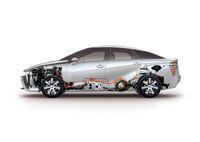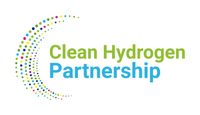Overview
PEMFC is the promising technology for automotive applications with a large deployment horizon by 2030. However, in view of extending their use to a broad range of customers, progress have to be done in terms of cost, performance and durability.
The FURTHER-FC project aims at understanding performance limitations due to the coupling between electrochemical and transport issues in the Cathode Catalyst Layer (CCL) which is the main bottleneck for future PEMFC.
The comprehensive and innovative approach is based on unique and intensive fundamental characterizations coupled with advanced modelling, from sub-micrometer to its full thickness. The analysis are performed on CCL customized with different and original materials, and will cover structural 3D analysis of the CCL, local operando diagnostics (temperature, liquid water) in the CCL, advanced characterization of ionomer films, innovative diagnostics on transport limitations, fundamental electrochemistry. Advanced one and two-phase models will be used as a support to the experiments and benefit from the experiments for more reliable inputs, physics and validation. The approach will also address the durability issues thanks to the better understanding of the correlation between CCL microstructure, local conditions and properties.
FURTHER-FC will propose and validate the performance and durability new ionomer and electrode structures specifically designed to prevent the limitations observed on current MEA, contributing to reach the MAWP targets for HORIZON 2024-2030.
FURTHER-FC will benefit from the active role of renowned partners gathering significant experience on MEA manufacturing and testing (Toyota Europe, CEA, DLR), state-of-the Art experimental techniques (CEA, DLR, PSI, CNRS-IEM, Univ. of Esslingen, Imperial College London) and modelling tools (CEA, DLR, CNRS-INPT) supported by international entities (Chemours-US, University of Calgary).


